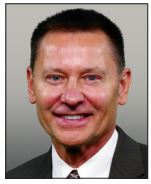
September brought a taste of two seasons.
Coming out of a very warm August, the first day of September was the same, peaking at 87 degrees, the warmest temperature all month.
The next day (Sept. 2), clouds and showers moved through, exiting the area by dinner time, making for a pleasant Friday evening and a great kick off for the start of Labor Day Weekend.
But the rain reprieve was brief.
Storms arrived later that night — shortly before 3 a.m. — with torrential downpours, small hail, and frequent lightning and thunder that woke many at an hour that most don’t like to be awakened on a long holiday weekend.
Nonetheless, when the rain ended the next morning, rain gauges offered a variety of readings: 1.25 inches Bellevue, 1.08 inches Pulaski, .79 inch Green Bay, .71 inch Seymour and .33 inch Suamico.
By late morning the clouds parted, making for a comfortable and nice Saturday (Sept. 3), and the pleasant weather lingered for the remainder of the holiday weekend.
For some, the highlight of the weekend occurred both Saturday and Sunday nights with numerous reports of northern lights, which were “the best in years,” according to some.
As the ensuing short work week unfolded, it was warm and humid with a string of days that saw temperatures climb back into the 80s.
Meanwhile, just in time for the weekend, we saw the arrival of an “upper low” — a pattern common here in spring and autumn when an area of unsettled weather (low pressure) gets cut off from the main steering winds and stalls across an area for days.
The result was a three-day stretch (Sept. 10-12) of dark gloomy skies, chilly temperatures in the 60s, a harsh north wind with frequent gusts more than 30 mph and on-and-off rain, drizzle and mist.
When the system finally departed late Monday (Sept. 12), much of the area had been drenched with one to three inches of rain.
After that ordeal, we were treated to a mid-month resurgence of summer warmth complete with humidity and at times hazy skies because of wildfire smoke aloft.
The “official” final weekend of summer (Sept. 17-18) had showers in the forecast, but we lucked out with mostly dry weather except for a brief shower during the Packers-Bears game Sunday night.
The final days of summer continued with warmth, and by the official close of the season on Sept. 21, temperatures for the month so far had averaged a whopping 4.4 degrees above average.
But then the weather flipped from summer to fall — almost magically in lockstep with the calendar.
The first day of autumn (Sept. 22) forced us to exchange shorts and tee shirts for long pants and hoodies as cool 60s settled in.
Also, fittingly for the “official” start of autumn, a frost advisory was issued that night to our north.
While we were spared frost in Green Bay, we did fall to 39 degrees that night, which was the first 30-degree reading of the season.
More chilly 60s and 50s settled in for the next eight days, along with more nights in the 30s which prompted our first frost advisory of the season the night of Sept. 28.
While some grassy areas were white the next morning, the official low temperature was 34 degrees — the coldest temperature all month.
The final day of the month brought a beautiful sunny day with temperatures again briefly touching 70 degrees.
Despite the very warm start to the month, the colder ending left the overall average monthly temperature at 1.8 degrees above the 30-year norm.
Monthly rainfall measured 3.30 inches, just a tenth of an inch above average.
More changes in the coming weeks
October brings with it the downward spiral in average high and low temperatures — by the end of the month the average high is 51 degrees, and the average low 35.
October typically brings a bit less precipitation than September — 2.67 inches compared to 3.2 — but that includes .3 inches of melted snow (average for past 30 years).
Daylight wanes quickly — we lose roughly three minutes a day — for a monthly daylight loss of one hour and twenty-eight minutes.
By the end of the month, we won’t see sunrise until 7:28 a.m. and sunset falls at 5:42 p.m.
Just shy of a week later, we turn the clocks back one hour as daylight saving ends on Sunday, Nov. 6, leaving us in near darkness by the 5 o’clock hour.
